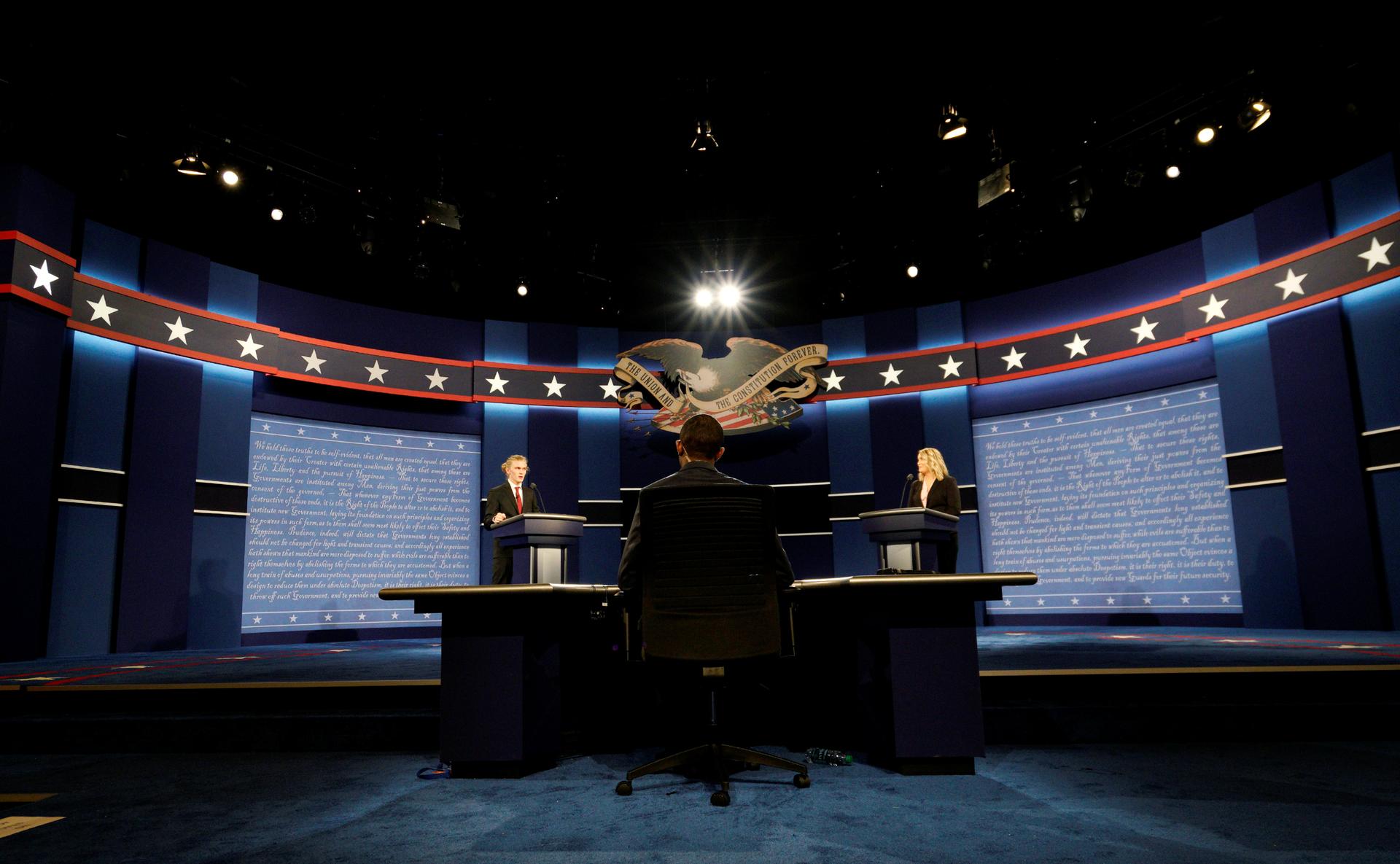Why tonight’s debate will be strictly structured — and might not even really be a ‘debate’
Students playing the roles of the candidates and moderator go through a rehearsal for the first US presidential debate at Hofstra University in Hempstead, New York, on Sept. 25, 2016.
The term “debate” is a bit of a misnomer for the political face-off between presidential candidates.
In fact, when the first presidential debate was held in 1960 between John F. Kennedy and Richard Nixon, ABC called it a “joint appearance.” In the more than 50 years since the inaugural debate, “joint appearance” still seems more appropriate for the highly controlled event.
Jill Lepore, a history professor at Harvard University and staff writer at The New Yorker, says that debates have rarely done much to inform voters because of the terms of the spectacle.
“FDR set a precedent in 1932 of refusing to debate a challenger,” Lepore said. “So for a long time, candidates were pressured to debate and refused. When Kennedy and Nixon debated, they had a lot of control over the conditions that they would debate in because the alternative is that they would walk away.”
Nixon wanted the camera to only show the person who was speaking, no reaction shots. Kennedy wanted reaction shots, but he conceded that neither man should be shown wiping the sweat from his face. The candidates agreed that they did not want to engage in a traditional structured debate. Instead, they fielded questions from a panel of reporters.
oembed://https%3A//www.youtube.com/watch%3Fv%3DgbrcRKqLSRw
Even though another presidential debate was not held for another 16 years, the format stuck. Dan Rather, who hosted the 1988 Presidential Debate between George H.W. Bush and Michael Dukakis, opened the event like this:
“This will not be a debate in the sense the word is often used in the English language because all of this is so tightly controlled by the candidates themselves and their managers. These things have developed over the years into what some people believe can more accurately be described as a joint campaign appearance or an orchestrated news conference.”
oembed://https%3A//www.youtube.com/watch%3Fv%3DWhgYPkbv4Qc
Everything from the height of the podium to the selection of the moderator is negotiated before the debate. The Federal Communications Commission even has a rule that all of the presidential candidates must get the same amount of air time.
Lepore said all of these regulations are not benefiting voters.
“What we’re being asked to do instead is evaluate the television style and success of the candidates,” she said.
One exception to this pattern of stuffy debates is the 1992 New York Democratic Primary Debate between Bill Clinton and Jerry Brown. The host Phil Donahue felt that past moderators had taken too much of an active role in presidential debates, so he simply introduced the candidates and let them have at it without saying a single word during the rest of the event.
“They were the kind of guys you can imagine sitting down at a table and having a really substantive, careful, and illuminating discussion for an hour,” Lepore said of Clinton and Brown. “Not everyone who runs for president is capable of that.”
This story was first published as an interview on To The Point.
